The 90s was a pivotal era that witnessed the rise of hip-hop culture from the streets of New York to the global stage. Along with its infectious beats and thought-provoking lyrics, the fashion that accompanied this movement left an indelible mark on the world of style. From baggy jeans and oversized jerseys to bold accessories and statement pieces, 90s hip-hop fashion was a true reflection of the bold, unapologetic, and rebellious spirit of the time.
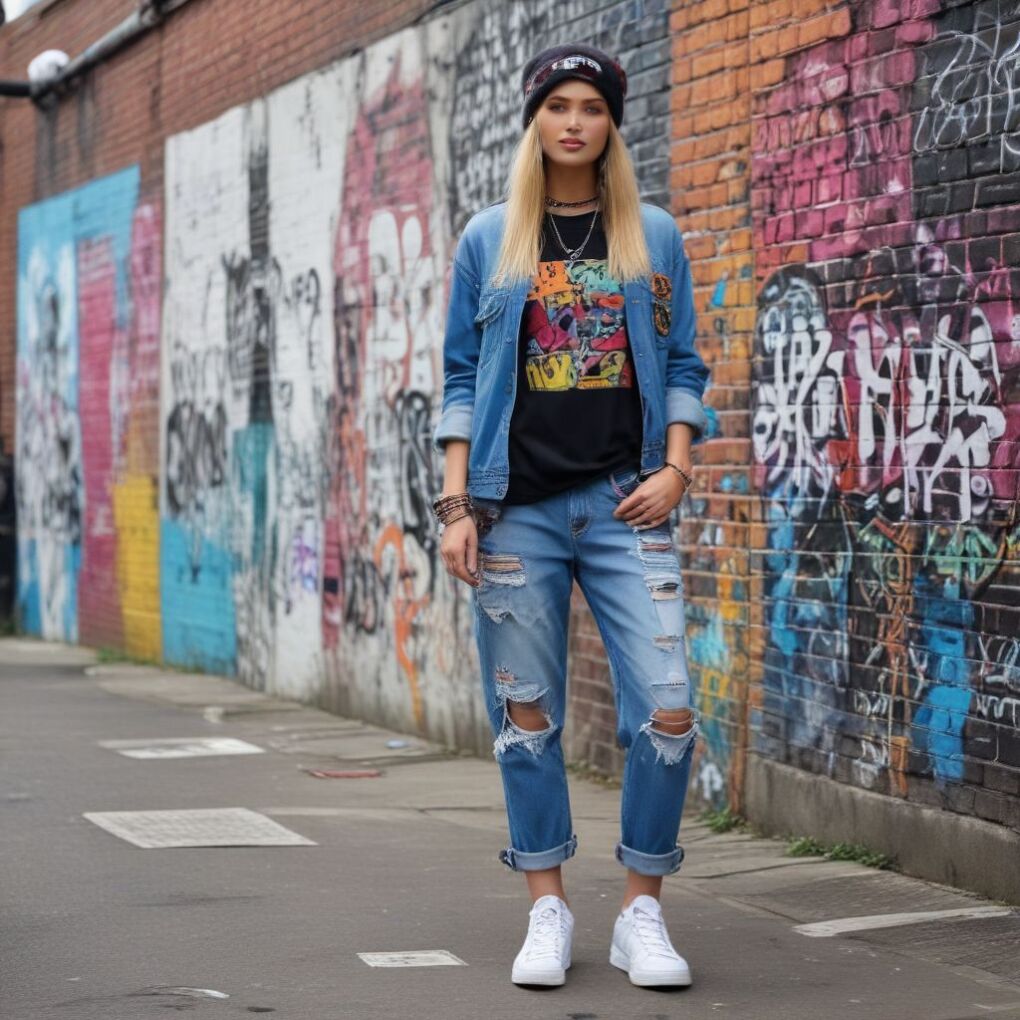
The Birth of a New Era
Hip-hop fashion in the 90s was more than just a trend; it was a cultural revolution. Born out of the urban streets, it gave voice to the marginalized communities and became a symbol of resistance against the mainstream. As hip-hop music gained popularity, the fashion that accompanied it quickly spread across the globe, influencing both high-end designers and everyday streetwear.
“Fashion is a language, and hip hop taught me how to express myself through clothes.” – Dapper Dan, legendary Harlem fashion designer
Key Elements of 90s Hip-Hop Fashion
Baggy Jeans and Oversized Clothing
One of the most iconic elements of 90s hip hop fashion was the oversized and baggy silhouette. Baggy jeans, often worn low on the hips, and oversized jerseys, hoodies, and t-shirts became the uniform of the era. This style not only represented a sense of rebellion against societal norms but also provided a comfortable and practical canvas for self-expression. Brands like JNCO and Kikwear became synonymous with the baggy jeans trend, offering massive leg openings and a distinct skater-inspired aesthetic.
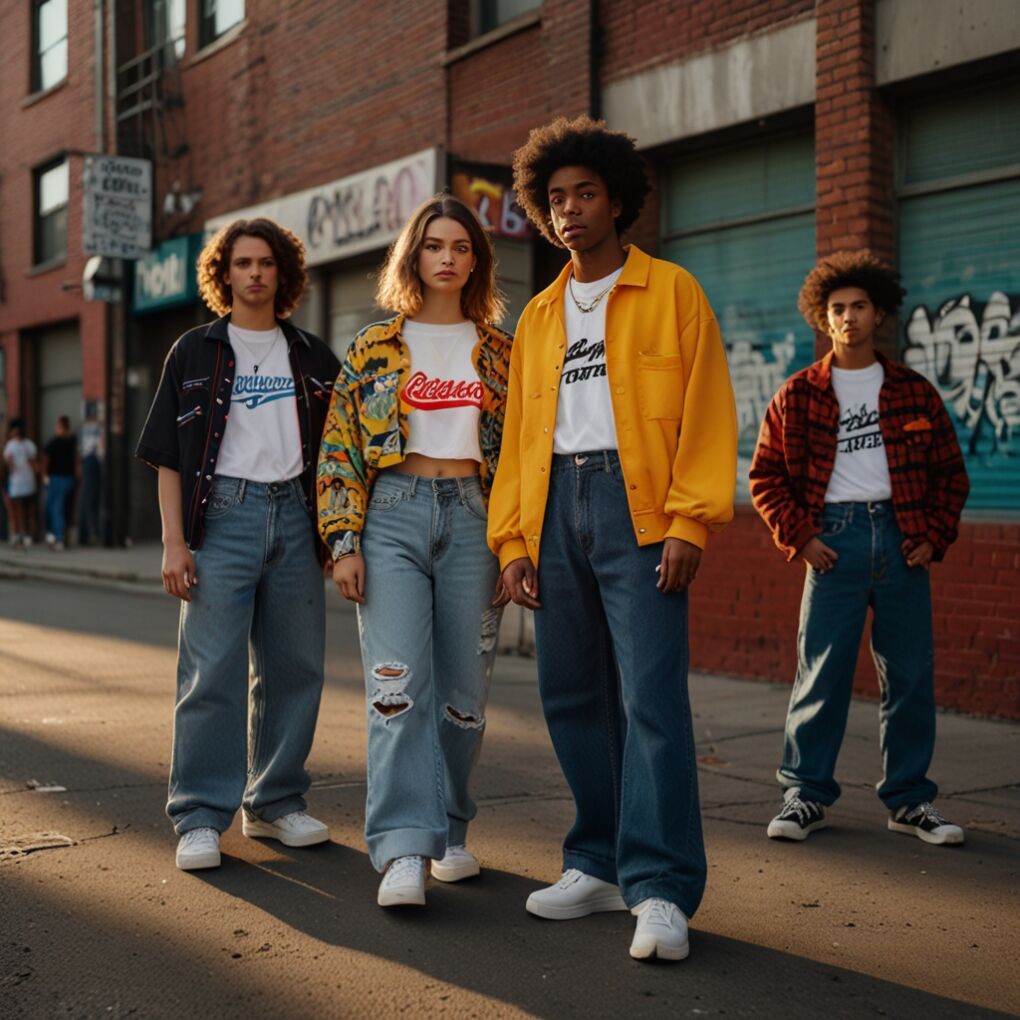
Streetwear Brands
The rise of streetwear brands like FUBU, ECKO, and Triple 5 Soul marked a significant shift in the fashion industry. These brands were founded by individuals from the hip hop community, catering to the urban youth and their love for bold, unapologetic style. FUBU, an acronym for “For Us, By Us,” was founded by Daymond John, J. Alexander Martin, Keith Perrin, and Carlton Brown in 1992. The brand quickly became a cultural phenomenon, with its colorful and oversized clothing adorned with the iconic FUBU logo.
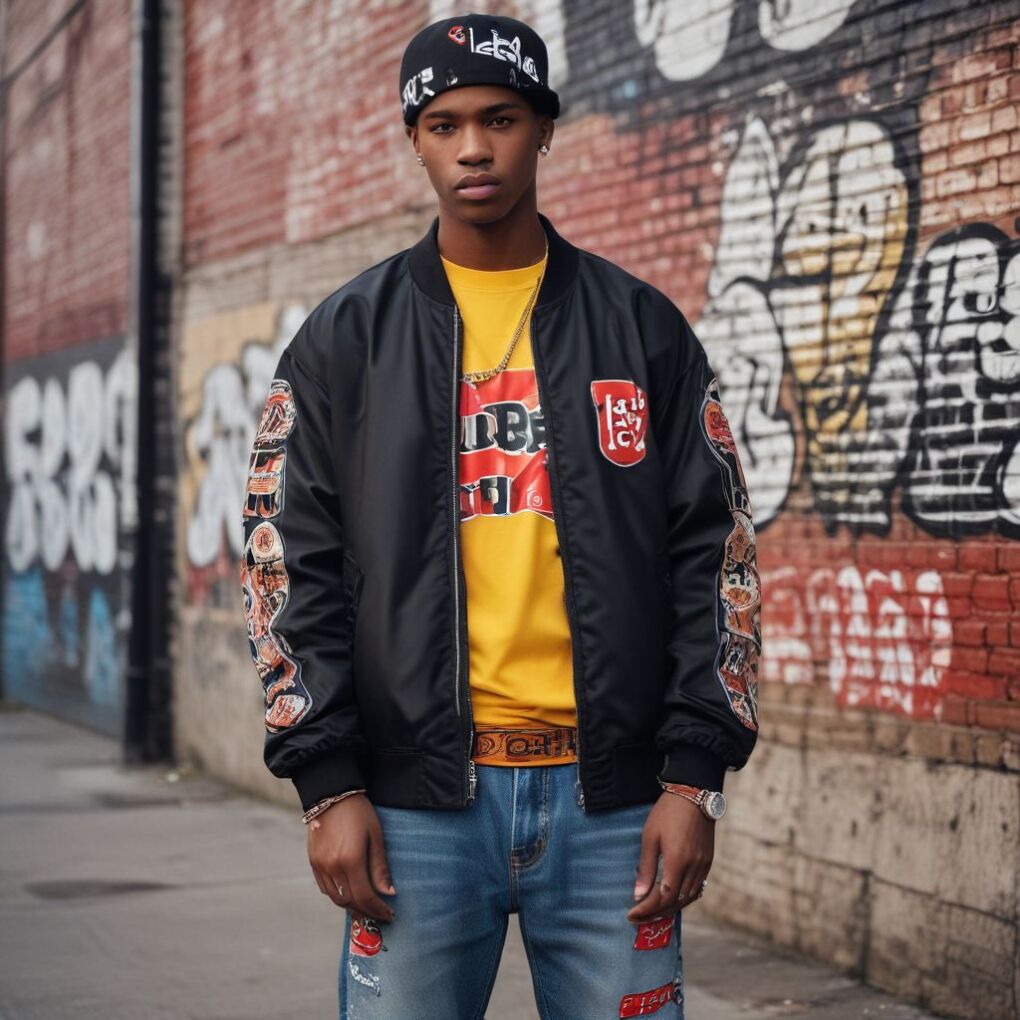
Branded Clothing and Logos
Brands like Nike, Adidas, and Timberland became synonymous with hip hop fashion in the 90s. Logos and brand names were prominently displayed on clothing, accessories, and footwear, becoming a status symbol and a way to showcase one’s allegiance to a particular brand or style. The Air Force 1 sneakers by Nike, for example, were a staple in the hip hop community, gaining popularity through endorsements from artists like Nelly and collaborations with brands like Supreme.
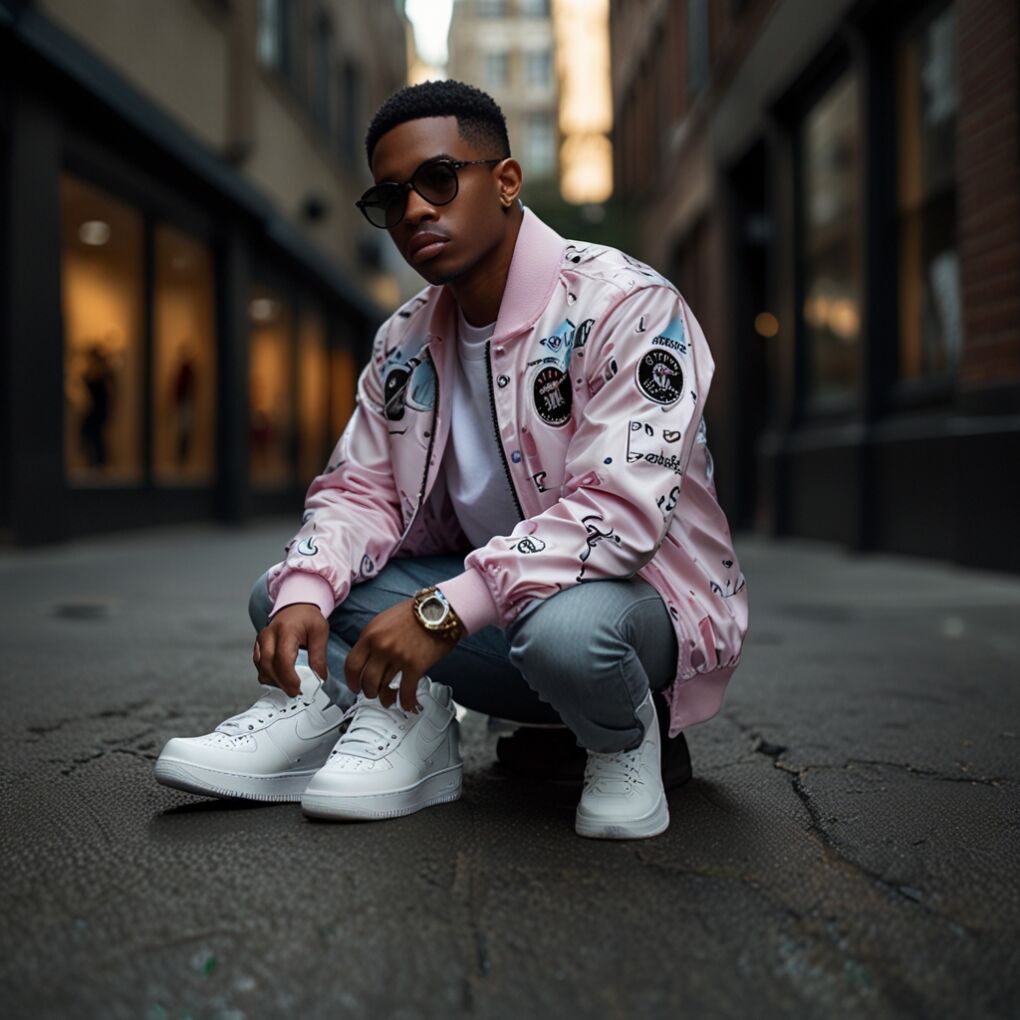
Bold Accessories
Hip-hop fashion in the 90s was all about making a statement, and accessories played a crucial role in achieving that. From chunky gold chains and oversized pendants to snapbacks and bucket hats, these accessories added a touch of personality and attitude to any outfit. Brands like Starter and Mitchell & Ness became go-to destinations for iconic snapbacks, while Kangol emerged as the go-to brand for bucket hats, worn by artists like LL Cool J and Tupac Shakur.
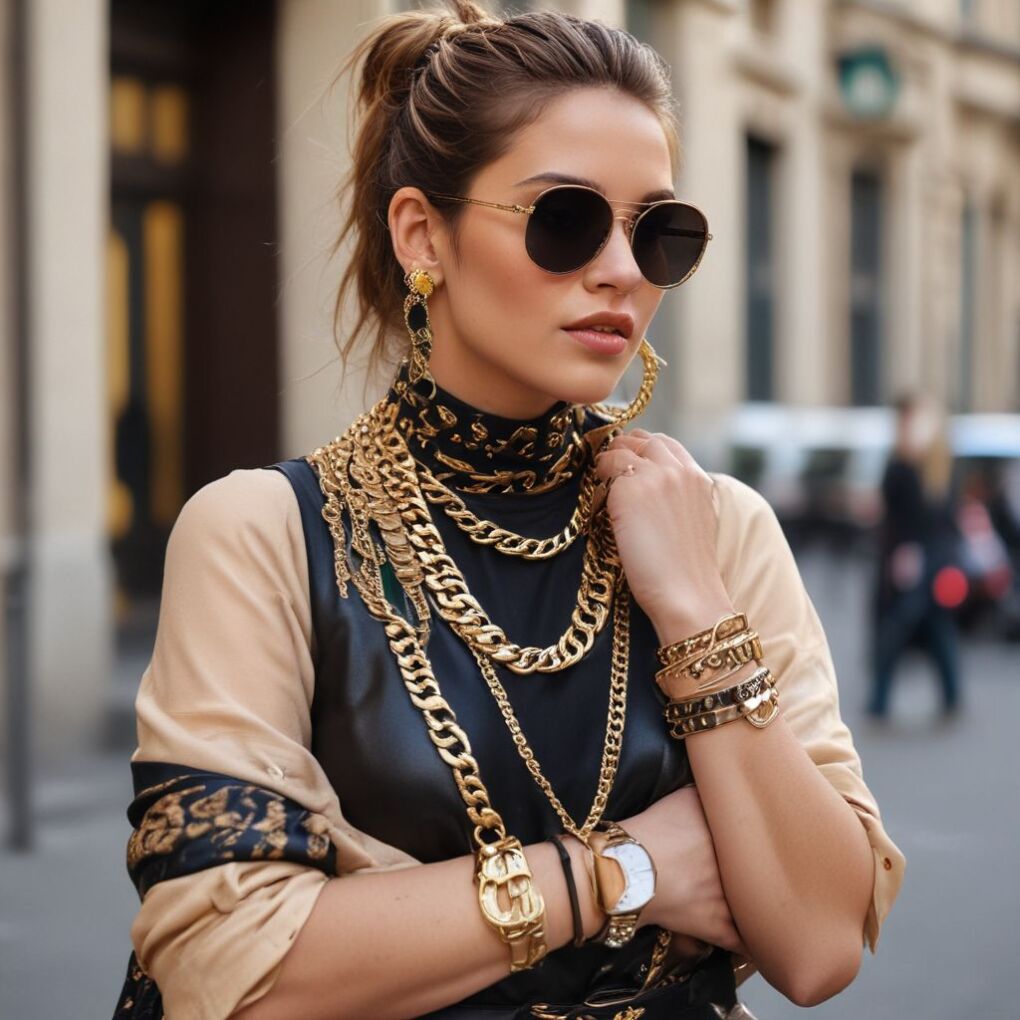
Influencers and Trendsetters
The 90s saw the rise of several influential figures who shaped the hip hop fashion landscape. Here are some of the most notable ones:
- Tupac Shakur: Known for his unapologetic style and bold fashion choices, Tupac Shakur’s influence on hip hop fashion was undeniable. From his iconic bandanas and oversized shirts to his love for Timberland boots, Tupac’s style was a reflection of his rebellious spirit.
- The Notorious B.I.G.: With his larger-than-life persona and distinctive style, The Notorious B.I.G. was a true fashion icon of the 90s. His love for oversized clothing, bucket hats, and Coogi sweaters inspired countless fashion trends.
- Salt-N-Pepa: This trio of fierce female rappers broke gender barriers and challenged societal norms with their bold and empowering fashion choices. From their iconic jackets and leggings to their signature high-top sneakers, Salt-N-Pepa’s style was a celebration of female power and individuality.
- Aaliyah: The late R&B sensation Aaliyah was a true trendsetter, known for her sleek and edgy style. Her love for Tommy Hilfiger clothing, baggy jeans, and crop tops inspired a generation of young women to embrace their individuality and confidence.
- Lauryn Hill: As a member of the Fugees and later as a solo artist, Lauryn Hill’s eclectic and effortless style was a breath of fresh air. From her iconic Rastafarian-inspired looks to her love for baggy jeans and oversized t-shirts, Lauryn’s fashion choices reflected her unique artistic expression.
The Impact and Influence
The influence of 90s hip hop fashion cannot be overstated. It transcended music and culture, inspiring high-end fashion brands and designers to incorporate elements of streetwear into their collections. Today, we see the resurgence of many 90s hip hop fashion trends, with brands like Supreme, Off-White, and Yeezy paying homage to this iconic era.
“Hip hop fashion has done more than just influence the way people dress; it has influenced the way people think about fashion and style.” – Damon Dash, co-founder of Roc-A-Fella Records
Fashion Revivals and Collaborations
In recent years, we have witnessed a resurgence of 90s hip hop fashion, with brands and designers tapping into the nostalgia and cultural significance of this era. Here are some notable examples:
| Brand/Designer | Collaboration/Revival |
|---|---|
| Gucci | Collaborated with Dapper Dan, incorporating his iconic designs |
| Adidas | Re-released the iconic Superstar and Stan Smith sneakers |
| Supreme | Heavily inspired by 90s streetwear and hip hop culture, with collaborations like the Supreme x Timberland collection |
| FUBU | Revived and reimagined their signature designs, relaunching in 2022 |
| Tommy Hilfiger | Collaborated with Aaliyah’s estate, celebrating her iconic style with the Tommy Hilfiger x Aaliyah collection |
| Fila | Experienced a resurgence in popularity, thanks to its association with hip hop culture in the 90s |
The Influence on High Fashion
The impact of 90s hip hop fashion extends beyond streetwear and collaborations. Many high-end fashion designers and luxury brands have drawn inspiration from this era, incorporating elements of urban style into their collections.
- Marc Jacobs: In his Spring/Summer 2017 collection for Marc Jacobs, the designer paid homage to 90s hip hop fashion with oversized silhouettes, bucket hats, and bold colors.
- Balenciaga: Under the creative direction of Demna Gvasalia, Balenciaga has embraced the baggy and oversized aesthetic, reminiscent of 90s hip hop fashion.
- Chanel: For its Spring/Summer 2022 collection, Chanel drew inspiration from the vibrant and unapologetic spirit of 90s hip hop fashion. The show featured oversized denim, bucket hats, and luxurious takes on streetwear staples.
- Dior: Under the leadership of Kim Jones, Dior Men has consistently paid tribute to the cultural significance of hip hop fashion. The Fall 2023 collection featured collaborations with iconic figures like Shawn Stussy, celebrating the intersection of high fashion and streetwear.
- Louis Vuitton: The late Virgil Abloh, as the artistic director of Louis Vuitton Men’s, seamlessly blended luxury with streetwear, drawing inspiration from his own roots in hip hop culture and the 90s fashion scene.
Cultural Significance and Longevity
Beyond its impact on the fashion industry, 90s hip hop fashion has become a cultural touchstone, transcending generations and inspiring artists, musicians, and creatives across various disciplines. Its longevity and enduring influence can be attributed to several factors:
- Authenticity: Hip hop fashion in the 90s was a genuine expression of the urban youth culture, reflecting their struggles, aspirations, and identities. This authenticity resonated deeply with audiences, ensuring its lasting cultural relevance.
- Rebellion and Self-Expression: The oversized and bold aesthetics of 90s hip hop fashion were a form of rebellion against societal norms and a way for individuals to express their unique personalities. This spirit of defiance and self-expression continues to inspire generations of young people seeking to carve their own paths.
- Nostalgia: As time passes, the 90s hip hop fashion era has become a source of nostalgia for those who lived through it, as well as a source of fascination for younger generations. This nostalgia factor has fueled the resurgence and appreciation of these iconic styles.
- Iconic Figures: The influencers and trendsetters of the 90s hip hop fashion scene, such as Tupac Shakur, The Notorious B.I.G., and Salt-N-Pepa, have become cultural icons whose styles and aesthetics continue to inspire and captivate audiences worldwide.
“Fashion is the armor to survive the reality of everyday life.” – Bill Cunningham, renowned fashion photographer
The Future of 90s Hip Hop Fashion
As we look to the future, it’s clear that the legacy of 90s hip hop fashion will continue to shape and influence the world of style. Brands and designers will undoubtedly continue to draw inspiration from this era, reinterpreting and reimagining its iconic elements for modern audiences.
However, it’s important to note that fashion is a cyclical and ever-evolving art form. While paying homage to the past, the future of hip hop fashion will also be shaped by new voices, perspectives, and cultural influences, ensuring that the spirit of rebellion, self-expression, and authenticity remains at its core.
Conclusion
The 90s hip hop fashion era was a cultural phenomenon that left an indelible mark on the world of style. From its bold and unapologetic aesthetics to its influence on high-end fashion, this era continues to inspire and shape the fashion industry even today. As we reminisce about the iconic looks and trendsetters of the past, we can’t help but feel a sense of nostalgia and appreciation for the cultural revolution that was 90s hip hop fashion. Its impact extends far beyond the realm of style, inspiring generations of artists, musicians, and creatives to embrace their authentic selves and push boundaries.
